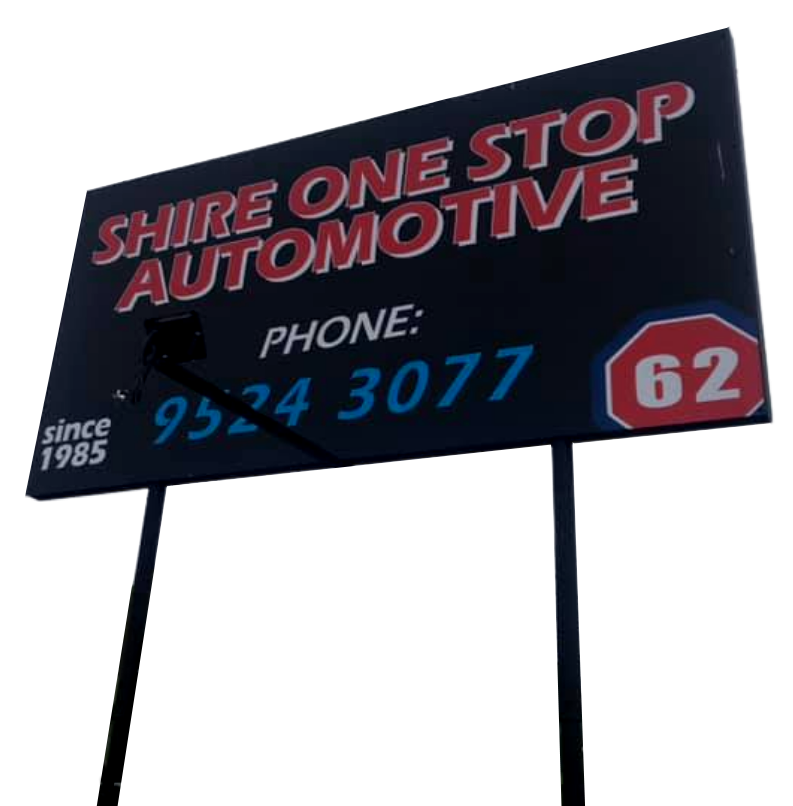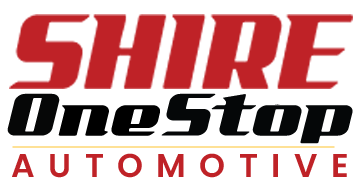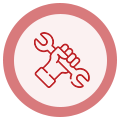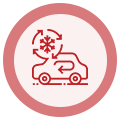
Brakes:
All drivers know that putting your foot on the brake slows the vehicle down, however, many do not know exactly how the brake system works.
The force applied to the pedal is multiplied through leverage which then, in turn, initiates a hydraulic system. Hydraulic systems run on incompressible fluids, in this instance brake fluid. The leverages force at one end, pushes a piston into a brake cable, which pushes the fluid through the brake cable and pushes a piston out of the other end, apply the friction to a wheel. This is the braking system. This friction is relayed through the tyres to the ground and vehicle comes to a stop.
Over time, brakes can fail for several reasons; a leak of fluid in the hydraulics can cause weak or failed brakes. Additionally, over time, the frequency and intensity of the application on the braking system can wear the brakes and component parts: these need to be monitored, serviced and as they deteriorate replaced. Good driving ethics and cautious driving can prolong brake life.
There are a number of components in the braking system which can cause brake failure:
Have a Question?
Drum brake systems are commonly used on the rear of a vehicle. The hydraulic system is initiated by pressing the brake pedal which causes two shoes inside a drum to move outwards making contact with the inner surface of the drum, causing resisting friction. The drum is connected to the wheel, so in this instance, results in friction being simulated from the drum to the wheel and causes the vehicle to stop.
Disc brakes may be on the front wheels or, more frequently, on all four wheels. The hydraulic system is initiated by pressing the brake pedal which causes two pistons to push two pads onto either side of a disc in a clamping motion. Brake discs are fixed to the wheels, therefore, when the pads clamp onto the discs, friction occurs and the wheels slow down bringing the vehicle to a stop.
ABS works on the principle that locked or skidding wheels will not created enough friction to stop the vehicle safety. So, ABS is there to assist the driver when elements out of their control prevent a safe stop. There are four main components to the ABS system: these are Speed, Sensor, Controller, Valves and Pumps.
Speed sensors appear on each wheel which relay speed measurements to the controller, which is an on board intelligence computer chip. Depending on the measurements the controller will operate valves in the brake fluid line to either remain:
- Open: allowing normal operation
- Closed: stopping excessive pressure through the fluid to the braking system to prevent brake lock
- Or Narrow: to minimise the pressure through the brake lines again to prevent brake lock
In instances where valves close or narrow, a pump is in place to restore normal fluid pressure back to the lines after the vehicle has stopped safely.
On modern vehicles it is becoming increasingly common that when a clutch is replaced the concentric slave cylinder (CSC) also requires replacement.
The assembly of a concentric slave cylinder is structured to allow it to operate directly in front of the clutch cover.
This new technology allows direct hydraulic load to be applied to the clutch via the master cylinder and concentric slave cylinder. As a result providing less pedal pressure, eliminating the potential loss of bearing travel caused by wear commonly associated in traditional linkage or cable type systems.
At Shire one stop automotive we recommend fitting a new concentric slave cylinder whenever performing a clutch replacement in vehicles where these units are used. Failure to do so may cause damage to the new clutch, resulting in expensive rework.
- Lighter pedal pressures allowing a more comfortable drive
- Self adjusting system prolonging the life of your clutch
- Less moving parts which means there are less items to wear or fail.
A standard clutch assembly comprises of several different parts that fit together and assist in helping you to change gear and pull away smoothly. These are the clutch cover, clutch plate, pressure plate, clutch fork, clutch cable or hydraulic system and bearing. There is one other vital component called the flywheel that sits next to the engine and this helps keep the clutch and engine spinning at the same time.
When you are driving and your foot is off the pedal, springs force the pressure plate to push the clutch plate against the flywheel. Because there is a high level of friction between the clutch plate and flywheel this keeps the engine and clutch turning over at the same speed.
When you press the clutch down, the clutch cable or hydraulic system pushes the clutch fork forward, which in turn presses the bearing onto the diaphragm in the clutch cover. The diaphragm then pulls the pressure plate away from the clutch plate which disengages the clutch from the flywheel and engine allowing you to change gear.
DO IT IN JUST 3 SIMPLE STEPS
A Consumer’s Guide to Automotive Repair.

1. Request a Quote
Instant Online Quotes from Reputable Garages Close to you

2. Get your car fixed
You visit the garage and pay the garage directly for the work

3. Vehicle Ready
Finally, you’ll drive away with our worry-free lifetime warranty













